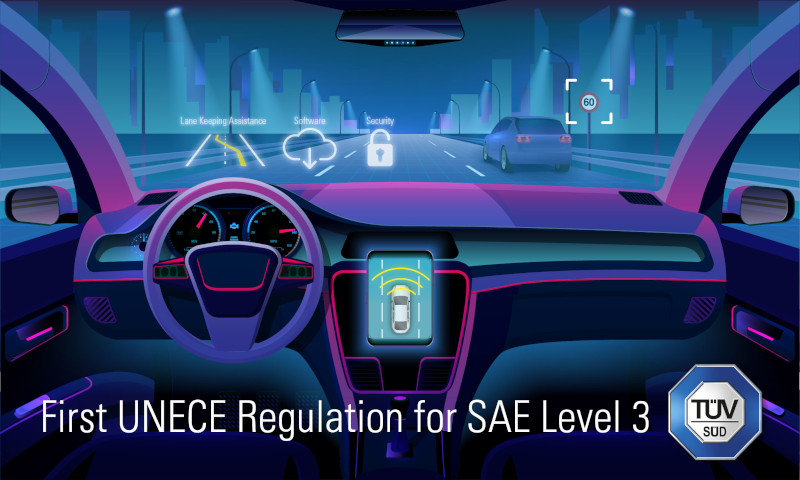Last modified more than a year ago

TÜV SÜD explains first SAE level 3 UNECE regulation
Recently, the United Nations Economic Commission for Europe (UNECE) has adopted an international regulation for Automated Lane Keeping Systems (ALKS). 42 countries have agreed on the new uniform provisions for the type approval of automated driving functions in SAE Level 3.
The ALKS helps drivers to have full control over to the vehicle temporarily. The UNECE passed regulation for cybersecurity and software updates. The UNECE regulation for ALKS is limited to passenger cars with up to eight seats plus driver and a maximum speed of 60 km/h. At travelling speeds of 60 km/h and less, the automated driving function controls the movements of the vehicle on highway-like roads, keeping it in its lane without the need of driver input. As the passenger car/system can drive automatically in SAE Level 3, drivers are no longer needed to keep their hands on the steering wheel or pay attention. Due to this provision, the regulation says steps must be taken to make sure the drivers are able to take back control within a defined period if prompted to do so by the ALKS.
In this regard, experts from TÜV SÜD support the new regulations passed by UNECE. “We explicitly welcome the fact that adoption of these three UNECE regulations now enables us to move from SAE level 2 to SAE level 3 for the first time. These regulations, harmonised at international level, now provide manufacturers with reliable guidance for the development of automated driving functions in all major international markets. Overall, the fact that 42 states have agreed on this regulation is an important indicator of the future viability of automated driving”, says Christian Gnandt, TÜV SÜD Vice President Automated Driving.
To read an article and a press release by TÜV SÜD, click here.
To read a press release by UNECE: “UN Regulation on Automated Lane Keeping Systems is milestone for safe introduction of automated vehicles in traffic”, click here.
Image @ TÜV SÜD


